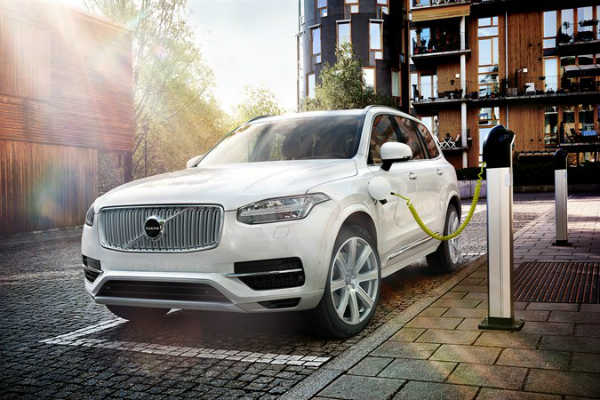July 25, 2015

The Volvo XC90 is entering its second generation. This new generation is beyond exciting. Before its official release in the fall later this year; it has already nearly reached its projected production numbers for 2015: 44,000 of 50,000 in pre-orders with at least another month before hitting showrooms. And that was only in the span of less than a year from its unveiling last year. It has also won numerous pre-release awards. One of the exciting new features is the Drive-E. The XC90 T8 Twin Engine, is Volvo’s horse in a race to beat BMW and Mercedes-Benz in/to the emerging Plug-in Hybrid SUV market. To combat the Bavarian Ultimate Driving Plug-in Hybrid SUV, Volvo has emphasized the performance specs of the their top of the range SUV. First off, while the engine is the same size in liters and uses just as many cylinders, the output of said engine; by itself; is better than the combined power of both electric and IC (Internal Combustion) engines in the BMW. The Swedish automaker is also stressing how clean the engine is, only producing 49 grams of CO2 per kilometer driven. Volvo’s Drive-E engine alone generates 320 horsepower (to the BMW X5 xDrive40e’s combined 308 bhp). This is due to both a supercharger and a turbocharge complementing one another. However, it produces a measly 295 foot pounds of torque (the IC and electric combination of the X5 developing 332 foot pounds). Luckily, the IC engine’s electric counterpart is geared for torque in the Volvo. While only producing 87 bhp, it generates a massive 177 foot pounds of torque. For perspective, my Volkswagen Jetta pushes 177 lb/ft and the Jetta has more torque than both a Civic Si or a Scion FR-S. Not to mention, that torque is only slowed by the speed of electricity... so essentially instant. While Jeremy Clarkson, would probably approve of the power output achieved by the XC90 T8 Twin Engine: 407 horses with 472 foot pounds of torque; it might also be Clarkson-esque. The reason I say that is because of the way the power is delivered. The IC engine takes care of the front wheels, while the electric engine is exclusive to the rear wheels. It could all be phenomenal, but they have not put much emphasis on the handling or chassis. Volvo has only mentioned that the XC90 (not just the Plug-in Hybrid SUV) will be featuring; racing inspired: double wishbone front suspension, and a rear axle with a new integral link. It sounds fantastic, but that is all the information Volvo has released, so as of now, it sounds fine, but clarifications and specifics will be appreciated when released. Because of the first of its kind powertrain in the SUV, the T8 is prototypical of its brand. The Drive-E will find its way on to new models, so it will be interesting to see how it fares on this one. Thus, far it is quite promising, twice the all electric range of the BMW X5 xDrive40e, and the ability to reach 0-60 almost a second faster. Instead of the typical 3 trim levels, Volvo offers 4. The base (Kinetic) price has not (or might not be available), mid-level (momentum) starts at $68,100, and the top of the line is split inyo two categories: performance (R-Design) and Luxury (Inscription); which start at $70,000 and $71,600 respectively. And that is before an estimated $4600 federal tax incentive. More than ever before, generation Swedish SUV tends towards luxury. I am sure he facelift did not come cheap for the automaker, but it was worth every penny, it looks infinitely better. But that will be a discussion for another time. The pertinent issue, is how the Volvo XC90 Twin Drive stacks up in the race against the other 2 Plug-in Hybrid SUVs. The X5 might take it in a loop around Nϋrburgring. The Mercedes GLE550e is a little more potent, but luxury between it and the Merc is too close to call as of now. But what sets the non-German apart, are her aesthetics, she is no Macan, but almost gorgeous.
Hello {{User.FirstName}} {{User.LastName}}.
You are logged in with email {{User.Email}}.